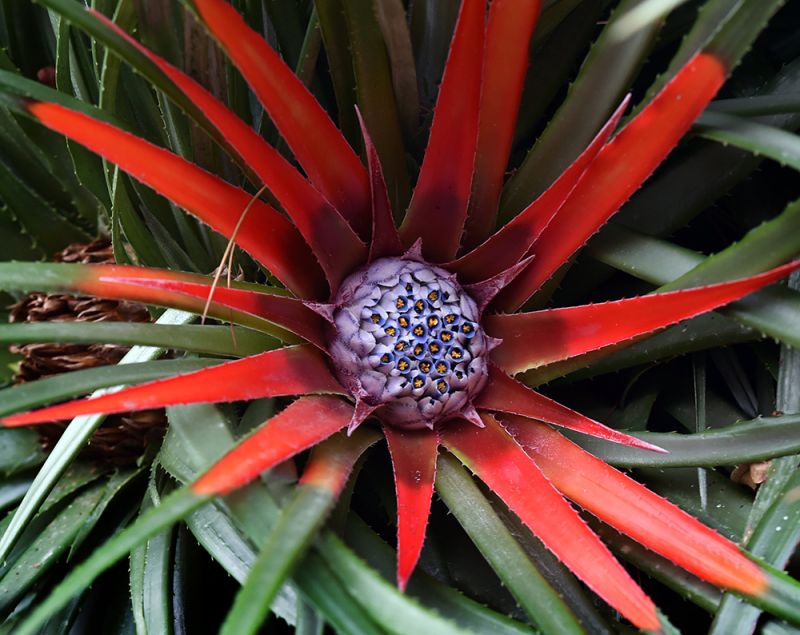Striking Start to Winter
This article was first published on 21 May 2019.

Fascicularia bicolor
Photo by the Otago Daily Times
When not in flower, Fascicularia bicolor blends into the background. It’s an unremarkable large green and spiny clump, architecturally attractive but easy to walk by. However, once flowering begins the plant becomes extremely conspicuous.
There is only one species in the genus Fascicularia. This native to coastal Chile grows on cliffs, trees, or in very well drained ground. The evergreen rosettes of arching lineal leaves are edged with spines. These spines point towards the tips of the leaves making weeding around this plant rather painful. Good thick gloves are required when dealing with this bromeliad.
Fascicularia forms large spreading clumps which are interesting, but nothing impressive – until late autumn or early winter, when the leaves in the middle of a rosette about to bloom slowly turn scarlet. Clusters of tiny flowers form in the centre - these have bright blue petals, yellow pollen and are surrounded by white furry bracts. The effect is arresting.
The spectacular red colouring stays until the flowers have finished then fades back to inconspicuous green.
This is the hardiest bromeliad in the world, growing happily outside in light frost. It requires excellent drainage and will flower more readily in direct sun. It is easily spotted at present, dotted through the rock garden at Dunedin Botanic Garden and will continue flowering through autumn and into winter.


